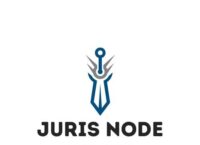Border Control Measures
Enforcement under the (Indian) Customs Act, 1962[1]
The Government of India under Section 11 of the (Indian) Customs Act, 1962, is empowered to prohibit importation and exportation of goods of specified description, if it deems necessary to do so. The provision, inter alia, empowers the government to prohibit the import or export of goods for ‘the protection of patents, trademarks and copyrights. The goods imported in contravention of the provisions of the Customs Act or any other laws for the time being in force are liable to be confiscated. In this regard, a customs officer is empowered to inspect any premises, conveyance, x-ray any person and effect search and seize in case where they have reasons to believe that the goods are of contraband nature. They can also investigate or interrogate any person and arrest him.
Intellectual Property Rights (Imported Goods) Enforcement Rules, 2007[2]
India has notified the Intellectual Property Rights (Imported Goods) Enforcement Rules, 2007. The rules comply with border measures as required by the TRIPS Agreement empowering the Customs Officers to enforce IPR over the imported products. Actions under Customs Act are independent to the remedies provided under various statues on Intellectual Property. As per Rule 2(b) of the Intellectual Property Rights (Imported Goods) Enforcement Rules, 2007, Intellectual Property includes patents, designs, and geographical indications together with trademarks and copyrights. Under the above Rules, a notice by way of an application has to be filed along with supporting documents, including:
- Proof of ownership of the Intellectual Property;
- Grounds for the suspension of release of the goods allegedly infringing IPR;
- Details of consignment and prima facie evidence of infringement;
- Description of goods with sample, model or photograph of the genuine product; and
- Name of customs airport/ customs port/land customs port/ land customs satiation.
Upon receipt of the Application, in the prescribed format, the Custom Authorities may register the Complaint and enforce Border Control measure for the protection of the Intellectual Property Rights. It is important to note that this right is not unfettered. Certain provisions have been also made and an elaborate procedure has been laid down for the release of the seized goods upon an application of the importer of the goods.
References:
[1] http://www.cbec.gov.in/customs/cs-act/cs-act-idx.htm
[2] http://www.cbec.gov.in/customs/cs-act/notifications/notfns-2k7/csnt47-2k7.htm

By:
Vijay Pal Dalmia, Advocate
Supreme Court of India & Delhi High Court
Email ID: vpdalmia@gmail.com
Mobile No.: +91 9810081079
If you found this article helpful, you may be interested in Advocate Vijay Pal Dalmia, along with Advocate Siddharth Dalmia‘s book, “A Guide to the Law of Money Laundering”. This comprehensive guide provides even more in-depth information on how to recognize and prevent money laundering. It’s packed with practical tips and advice for staying one step ahead of financial criminals.




